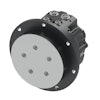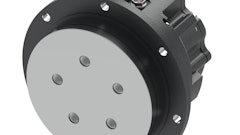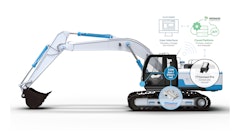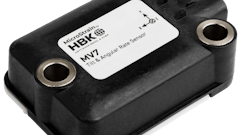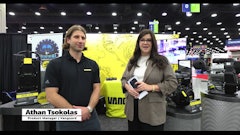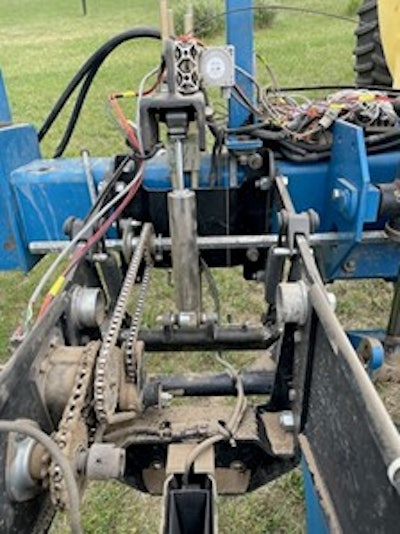
The U.S. agricultural industry has made great strides in productivity over the past 100+ years. According to the U.S. Department of Agriculture (USDA), Economic Research Service agricultural productivity data, total farm output almost tripled between 1948 and 2017, while the amount of labor declined by nearly 76%. At the heart of the industry’s ability to produce crops faster, more efficiently and more consistently is technological innovation. Some of the newer technologies used during the planting process to improve efficiency and crop health include precision planting, robotics, GPS and soil sensors.
Companies are now testing a new technology — an electric variable damper — that is showing promise in its ability to consistently and economically control seep depth. A critical factor that affects the germination and growth of plants, appropriate seed depth ensures seeds receive the right amount of moisture, temperature and oxygen to become healthy, productive plants. To date, seed depth has largely been controlled by hydraulic, pneumatic and mechanical downforce systems.
In contrast, the electric variable damper is being positioned as a simpler and less expensive alternative for providing exceptionally consistent seed depth in conditions with consistent soil types and where high-sped planting is desired.
How Did We Get to Where We Are Today?
Over the past decade, significant advancements in planter and seeding technologies have enabled greater control of seed depth consistency. Hydraulic and pneumatic downforce technologies have been leading the way in consistent seed depth control. These technologies have allowed for faster planting, leading to greater productivity. They have also contributed to increased yield by enabling a uniform crop stand at time of harvest. This means a greater percentage of the crop reaches its point of harvest at the same time for more efficient harvesting.
Both hydraulic and pneumatic technologies act to provide down pressure that allows the cutting disks in the ground to maintain a prescribed height. They have been proven to be reliable technologies when compared to springs. Some planter manufacturers have even completely phased out mechanical springs as a method for maintaining ground contact and seed depth.
Pneumatic systems are often associated with section control where air pressure is applied to a cylinder or air bag. This technology most commonly controls groups of rows or an entire machine to a common pressure. A unique, easily adjustable air pressure could be set for each field or crop.
Hydraulic systems are often associated with individual row control. Each row’s down pressure can be regulated based on force feedback sensors. The superior accuracy, reaction time and magnitude of force contribute to the positive market acceptance of hydraulic downforce in the market. Until now, a hydraulic downforce system has often been the preferred technology for maintaining seed depth.
While both hydraulic and pneumatic systems have clear performance advantages, they come with some drawbacks. Installation costs can be high due to the labor-intensive process of routing electrical, air and hydraulic lines. Plus, the potential for leak points (especially at fold and latching points) can be problematic. One of the leading hydraulic downforce systems on the market requires three hydraulic hoses to be run to each row. That means the number of connections for a 36-row machine, for example, could have well over 100 connection points.
The Appeal of Alternative Electric Force Control
While recent damping technology is, technically, not new, its use in this specific application, however, is revolutionary. One company recently equipped a planter row unit with a smart electric damper. The damper was used in combination with different types of sensors in order to evaluate different methods for maintaining consistent seed trench depth. Springs or, possibly, an air bag could be used to provide an external force to maintain ground contact.
There are likely many ways to control a damper based on the amount of information available on modern crop planters. Speed and force measurements seemed to be the best place to begin evaluating an intelligent damping strategy, since these inputs are used in existing downforce applications.
 Figure 1. Row unit with damper installedParker
Figure 1. Row unit with damper installedParker
The Role of Magnetic Fluid in Making the Damper Work
Smart electric dampers (otherwise known as MR dampers) rely on Magneto-Rheological (MR) Fluid which consists of magnetic particles suspended in a carrier fluid. When a magnetic field is applied to MR fluid, it proportionally will change from a fluid to a semi-solid state in milliseconds, assuming the viscosity of the fluid is proportional to the magnetic field applied. This process allows the dampers to adjust resistance to movement.
The fluid passes through an annular orifice in the piston of a damper cylinder. An electric coil inside the piston creates the magnetic field necessary to change the viscous properties of the MR fluid dynamically based on electrical commands from a control system.
Today these dampers are applied in suspension systems across various applications. It is believed that ground forces resist upward movement to maintain consistent seed depth similar to that of the downforce systems currently available on the market.
 Figure 2. MR damper and damper piston assemblyParker
Figure 2. MR damper and damper piston assemblyParker
Testing Parameters and Considerations
To understand different ways a damper could be controlled to provide consistent seed depths, a series of tests utilizing three different sensor types were developed to evaluate potential control strategies for the damper.
- Look at the acceleration data to determine if the acceleration of the row unit could be used as input. The goal of this approach was to increase stiffness as acceleration increased to act as a traditional damper.
- Consider vehicle speed. The hypothesis here was that as speed increased, damper stiffness could be increased proportionally.
- Use a force sensor to detect ground force. Since force sensors are already commonly used in planter applications, the use of such a sensor was easy to integrate. The thinking behind using a force sensor would be to increase the stiffness of the damper when large spikes in force are detected and released when high force is no longer detected. A force threshold at which the damper would be energized was also evaluated.
Each of the three methods described above were evaluated to determine what type of control would provide the most consistent seed depth control. Another consideration was that OEMs may choose to use a combination of sensor inputs described to control the stiffness of the damper. The research team was careful to limit the maximum stiffness to avoid the row locking into place and being dragged through the ground if the damper was maintained at a high level.
Several passes were made through a field with a row unit equipped with a damper alongside a row unit equipped with only springs. Data was taken on both rows to determine stability and relative motion of each row in order to extrapolate how well each row could maintain a consistent seed depth.
 Row 1 (closest) equipped with a damper and downforce springs. Row 2 operated with downforce springs onlyParker
Row 1 (closest) equipped with a damper and downforce springs. Row 2 operated with downforce springs onlyParker
Identifying a Clear Winner
When controlling the damper with a force feedback sensor, the row unit with damper maintained a more consistent and smoother trench depth when compared to only springs. The cumulative deviation of the damped row showed less than half of the movement away from average target than what was observed by the spring. The conclusion is that using a damper as a means of depth control should provide improved performance when compared to springs at maintaining a prescribed depth. Utilizing vehicle speed and acceleration data did not seem to show as meaningful results when compared to the force sensor method of control.
While the results clearly demonstrated the superior performance of the dampeners, the testing was limited by dry field conditions which meant that only a linear sensor could be used on the test row to judge trench consistency.
 Figure 3. Data showing relative movement of damped row (blue) compared to springs (orange)Parker
Figure 3. Data showing relative movement of damped row (blue) compared to springs (orange)Parker
Potential Next Steps
Fields with little variety of field conditions located where operators desire high-speed planting are likely the best fit for this electrically damped downforce method. The fixed springs used to maintain ground contact can be set to the desired force and damping. The electric dampers can adjust stiffness to resist upward force and maximize ground contact. Vehicle speed could also provide valuable input to allow for speed and stiffness to be indexed. It is possible that only force input or speed or a combination of both could provide an optimum consistent seed depth, but more testing is needed
Given these initial promising results, however, it is likely that some form of a damper system will be commercially available in the not-too-distant future.


